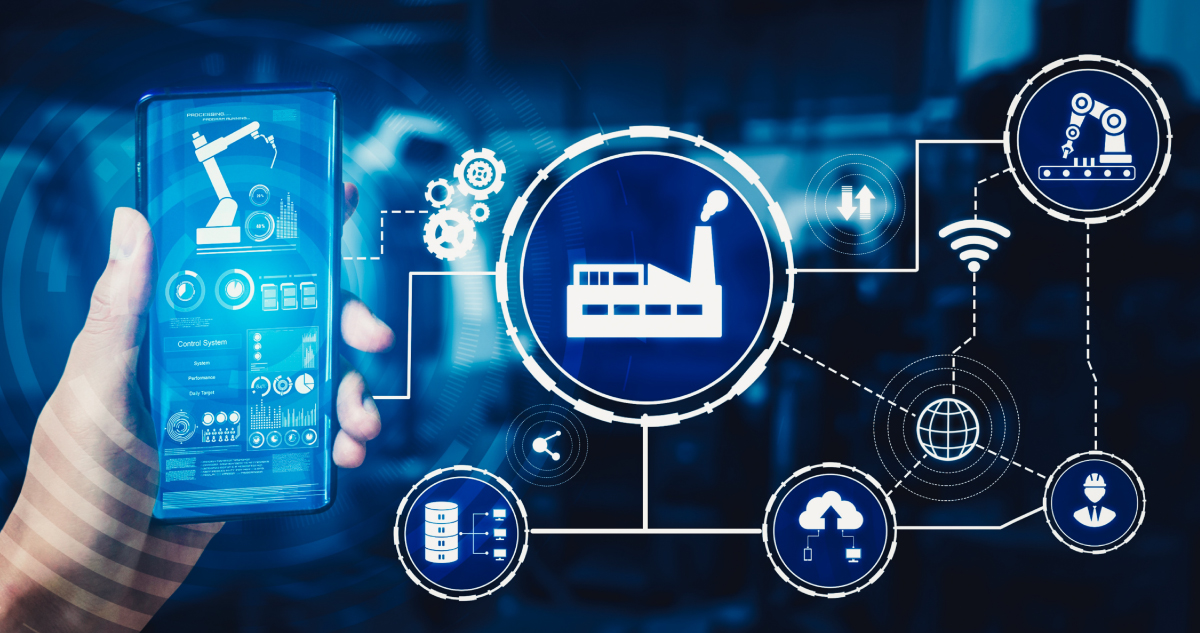Industrial Automation is an umbrella term that refers to the improvement of processes by using any form of software and hardware to aid operators, including Robotics. After the start of the Industrial Revolution, the most important disruption has been the introduction of industrial automation.
The first attempt at industrial automation was made during World War 2 with the introduction of Computerised Numerical Control (CNC) machines. The CNC machines have evolved from basic equipment to those that minimized the need for human intervention and ensured higher levels of operational accuracy.
Industrial Automation also includes data acquisition systems, supervisory control, and Programmable Logic Controllers (PLCs). Supervisory Control and Data Acquisition (SCADA) systems collect data from various sensors and PLCs attached to the factory equipment. They not only collect data from the PLCs but also control their functioning.
The advent of Robots in the early 1970s has added a new dimension to Industrial Automation, while Collaborative Robots (Cobots) have added momentum to the adoption of Robotics. The vast range of End of Arm Tools (EOATs) available is often the distinguishing performance factor for robots and cobots.


Robots
Normally used to handle heavier or larger-sized objects with speed and precision, robots require dedicated space with limited human movement to avoid workspace injuries. This is achieved by using proper fencing in the enclosure where they are located. Lock Out Tag Out (LOTO) should also be applied to avoid any accidental operation which can lead to injury – only authorised persons should be allowed to set LOTO. In closed environments, floor space becomes critical for such an arrangement.
For external environments such as despatch bays of automobile plants or in cargo bays of seaports, there is a need to withstand adverse climatic conditions. Hazardous or continuous process environments also present their own unique challenges. Robots made of speciality materials are used in these cases.
In special cases Robots can also be equipped with special sensors, in which case a Robot performs its tasks in 3 stages of sense, plan, and act. In-built sensors enable robots to sense their environment. Based on this, the optimal route plan for the robot is prepared using the required programmable interface system. In the act stage, the robot performs the processes and sequences as determined in the planning stage.


Cobots
Unlike robots, Cobots can function alongside humans. They need less floor space, no safety fencing system and come with many in-built safety features to reduce collision or contact injury to humans. They can easily be moved from one application to another by simple reprogramming, and their movement is also easy due to lower weight. Additionally, they also cost less than their robot counterparts. Certain models can be mounted on Automated Guided Vehicles (AGVs) to augment pick and place operations in warehouses. Cobots are particularly useful in applications such as CNC, injection moulding, and welding which handle smaller objects.
Trends in Robotics
The field of Robotics today also encompasses Artificial Intelligence (AI) and Machine Learning using which robots can be programmed to perform advanced tasks. Advances such as open source Operating Systems like ROS (Robot Operating System) have made programming Robots accessible to the public at lesser cost. This drives innovation making Robots more agile and contributing to improved efficiency, quality, and productivity.

EOATs
The suitability of any Robot or Cobot to an application is determined by its EOAT (End of Arm Tooling). Different EOATs are available suiting different industries such as logistics, F&B, automobiles, avionics, shipping, medical, hospitality, and continuous process.
MELSS has provided many automation solutions for industry including SCADA, PLCs, Robots and Cobots. We provide complete solutions in Robotics and our experts suggest appropriate equipment based on your needs. We use an exhaustive range of Cobots from Doosan, Robots from Yaskawa/ Epson and EOATs from OnRobot. Our indigenously developed Solderbot helps in Robotic Soldering. MELSS repertoire of automation also involves electronic hardware developed in-house that allows our many customers to acquire data on the shopfloor for enabling traceability, data logging, warehouse automation and assembly-kitting activities.





